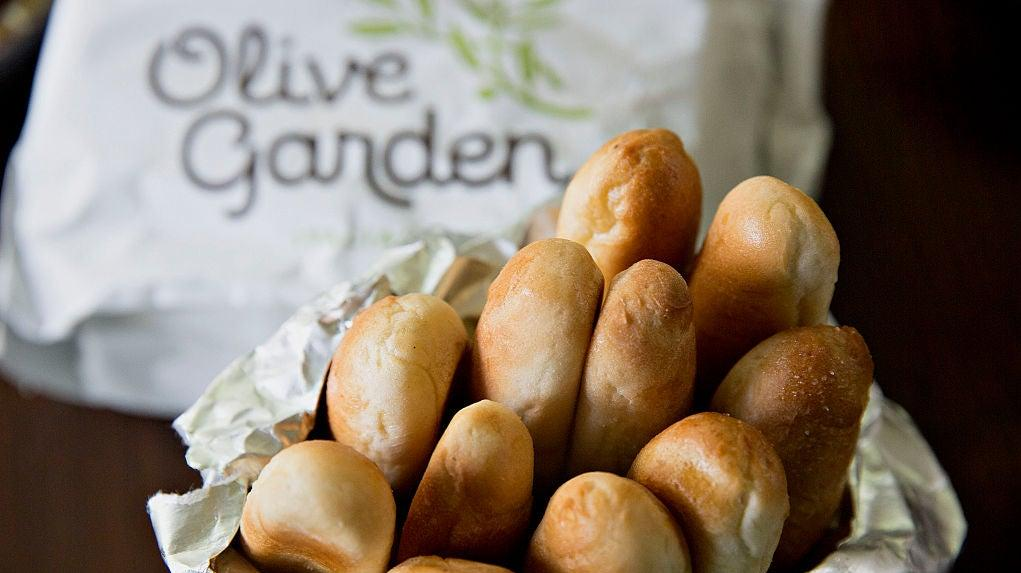Olive Garden Might Just Be America's Utopia
A new study finds that we are least segregated when we sit down for some endless breadsticks.
As fun as it might be to gawk at the excess of gold-plated steaks and roll our eyes at the fancy folks of the fine dining scene, the fact is that class segregation is all too evident in where we choose to eat each day in America—and there are surprisingly few places where wealthy and non-wealthy people converge in the course of daily life. A new study highlights just how separated we are by wealth and status and, in the process, reveals that there are a few key places most American consumers seem to agree on: Olive Garden, Chili's, and Applebee's.
The research was conducted by Maxim Massenkoff of the Naval Postgraduate School and Nathan Wilmers of the MIT Sloan School of Management, who used mobile location data to see how Americans' movements align with where they live. Social isolation—in this case, only associating with people in a similar income bracket—has become a more prominent issue across the decades, as the gap between the very poor and very rich continues to grow. Church used to provide a reason for Americans of all income levels to gather together, but with the decline of organized religion, there's less occasion than ever to be near people who have more or less than ourselves. Enter the mid-tier chain restaurant.
How chain restaurants bring us together
"Our results demonstrate that the places that contribute most to mixing by economic class are not
civic spaces like churches or schools, but large, affordable chain restaurants and stores," reads the paper in part.
Indeed, full-service restaurants top the chart of places where integration of classes happens most. The Economist has a handy chart here, listing that category ahead of even gas stations, motels, and bars. "Put simply," The Economist writes, "if a zip code has an Olive Garden it is also more likely to be a place where people in suits and people in landscaping uniforms know one another."
People are most socially isolated among people of their own income level the closer they are to home, and chain restaurants like Olive Garden and Applebee's are typically built in centralized locations (strip mall parking lots, etc.) that don't favor one residential neighborhood over another. When everyone is traveling beyond their home base to reach these restaurants, social mixing is more likely to occur.
The number of full-service restaurant locations contributes to class mixing, too. While some chains have so many locations that each of their highly local storefronts serve predominantly wealthy or non-wealthy customers in the immediate vicinity (CVS, for example), sit-down restaurants have a little less volume, meaning their locations are fewer and farther between, and aren't typically situated where only one economic class can access them.
Finally, at the risk of stating the obvious, people just... really like the food. Darden, the restaurant group that owns Olive Garden (as well as some other mid-tier chains like Cheddar's Scratch Kitchen and Bahama Breeze), has grown its portfolio significantly in the past year, with Olive Garden sales up 4.4% and total restaurant sales of $2.8 billion. Olive Garden's Never Ending Pasta Bowl is a perennial draw for customers, a representation of good value that appeals to people of all income brackets. And where else are you promised unlimited breadsticks?
Perhaps above all, though, this research highlights the importance of having a "third place," the sociological term for gathering places that aren't home or the workplace. Whether that's a library, museum, public park, or a restaurant with comfy booths, decent salad, and fair prices, third places are vital, and every community needs them.
Given the data, the authors of the study conclude that the stats on class mixing at chain establishments could have an impact on how cities are designed going forward, in order to foster community and decrease isolation. "Insofar as policy makers seek to increase exposure between different classes," the paper says, "they should pay attention to the role of firms in shaping class mixing."
